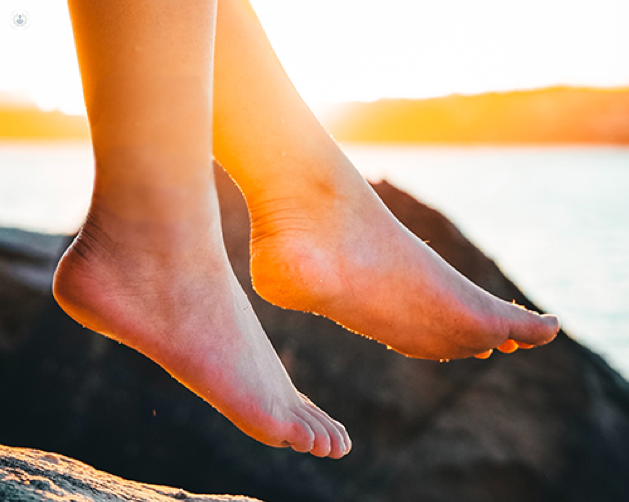Foot arthritis: symptoms, treatment and recommended exercise
Autore:It's estimated that in the UK, more than 10 million people have arthritis. It can affect people of all ages, including children. It can be extremely debilitating if left untreated.

Luckily, Mr Adam Ajis, a leading orthopaedic surgeon with a specialist interest in ankle and foot disorders, offers a range of both surgical and non-surgical treatment options. In our latest interview with Mr Ajis, he highlighted some options that can really help ease symptoms such as inflammation, tenderness, joint pain and stiffness. Through treatment options, Mr Ajis helps patients resume their day-to-day activities.
Can regular exercise and stretching help ease foot arthritis?
Unfortunately, exercise and use of the foot in general, tends to make the symptoms of arthritis such as pain and swelling worse. Impact based exercises, such as running tend to be worse. If a joint can move, then motion is thought to be beneficial for cartilage as cartilage derives its nutrients from the surrounding joint fluid. If changing or reducing activity levels have not controlled symptoms, weight loss and anti-inflammatory painkiller tablets are a good next step.
How does regular exercise improve symptoms of arthritis?
Exercise that involves movement but little impact can be protective for cartilage in joints that move. The foot, however, has some joints that move very little under normal circumstances. If these joints are affected, then exercise will have no benefit to stop those symptoms. For joints that move a lot like the ankle or the big toe, keeping them moving helps cartilage and can delay the onset of symptoms.
What kind of exercise do you recommend to patients?
Non-impact exercises such as swimming and cycling are what I recommend, but any exercise can be done depending on the level of comfort.
What medical treatment is available for people with foot arthritis?
Treatment typically starts with weight loss if appropriate and activity modification. If this fails, then physiotherapy and pain killer tablets can be tried. Once this also fails to control symptoms, the next step is to consider injections of steroid/PRP/hyaluronic acid etc. If this also fails to control symptoms adequately, surgical treatment can be considered. The type of treatment advised will depend on a number of factors, the joint involved and how severe the arthritis is. For foot & ankle joints, minimally invasive treatments like arthroscopy and cheilectomy can be performed. Some joints will need to be fused surgically and other joints may be replaced like the ankle for example.
For more information on treatment options, you may like to book an appointment with leading orthopaedic surgeon , Mr Adam Ajis, via his Top Doctors profile .


